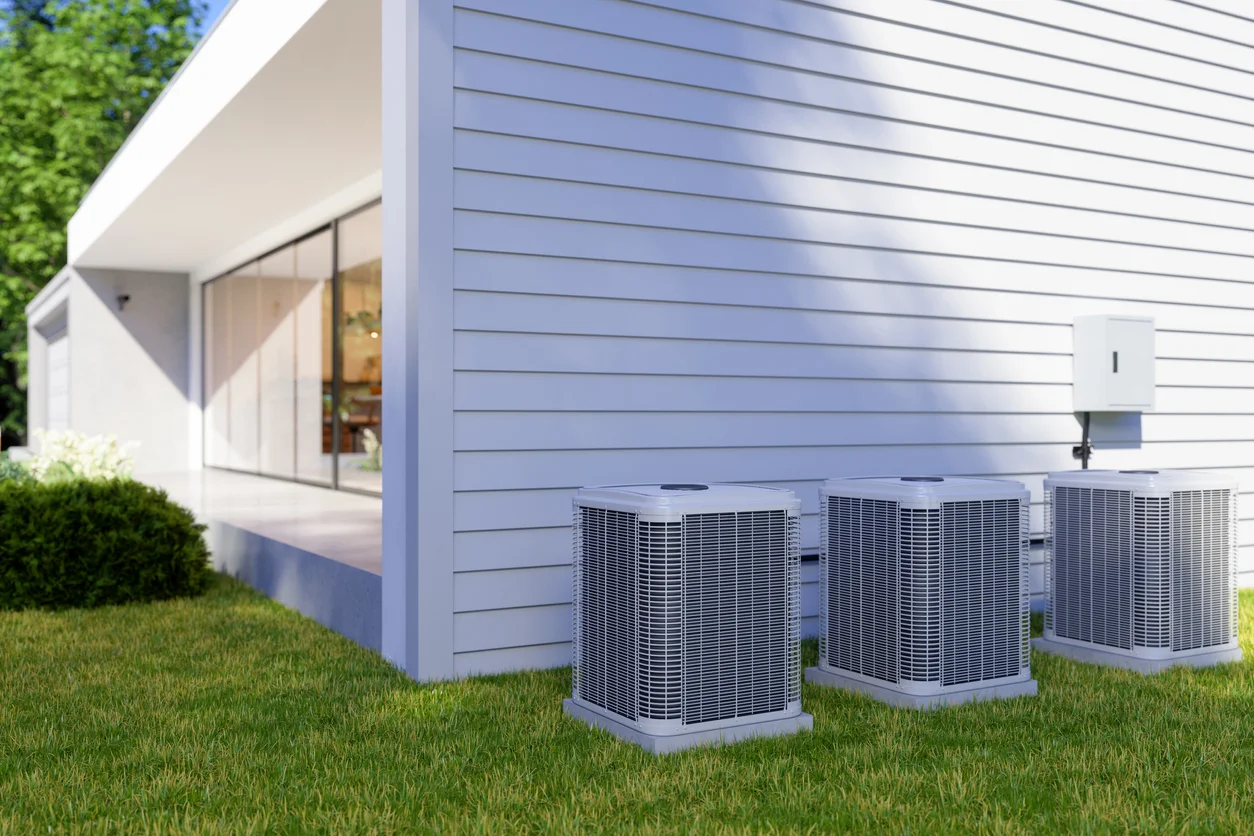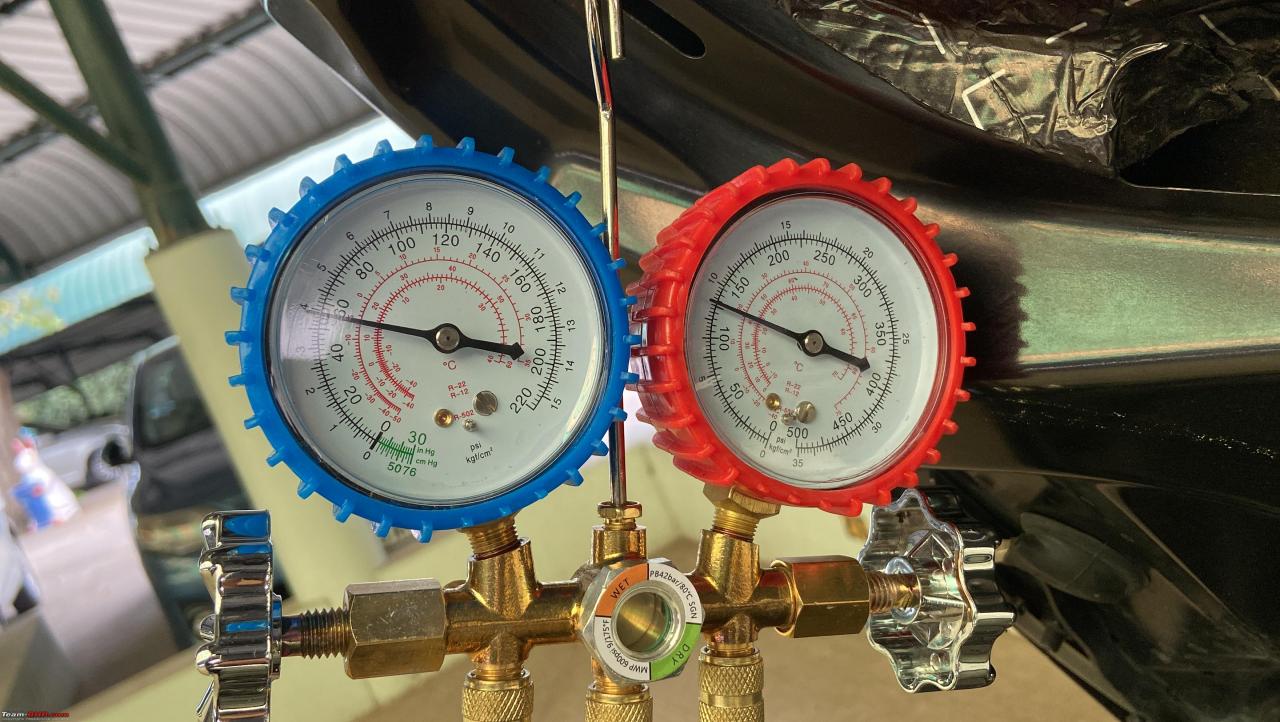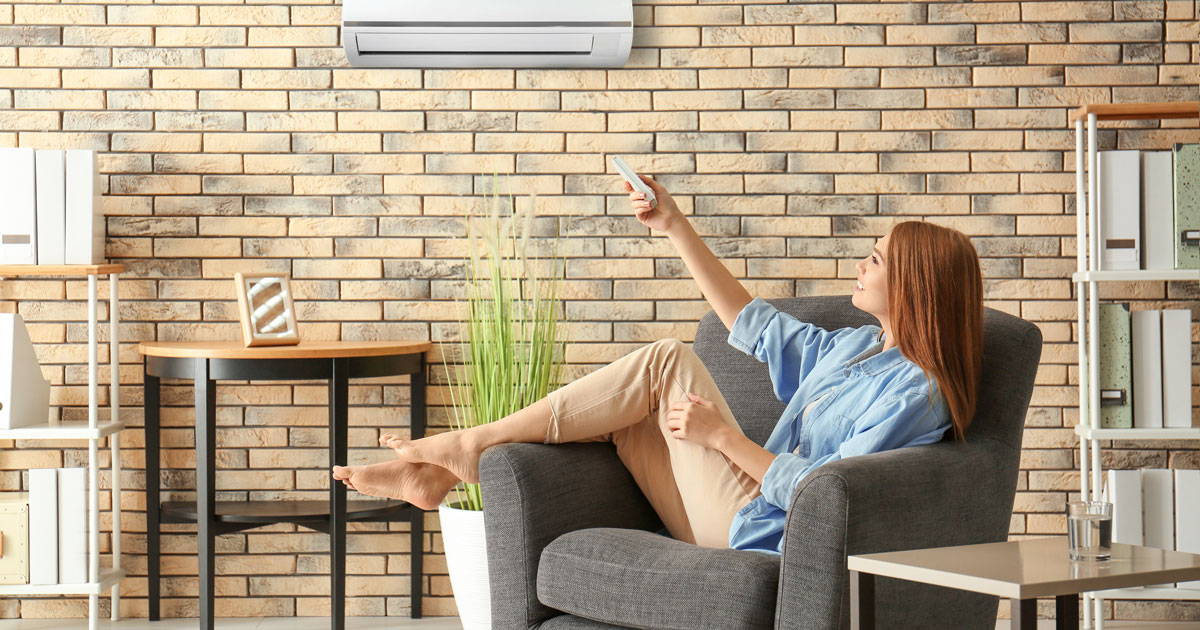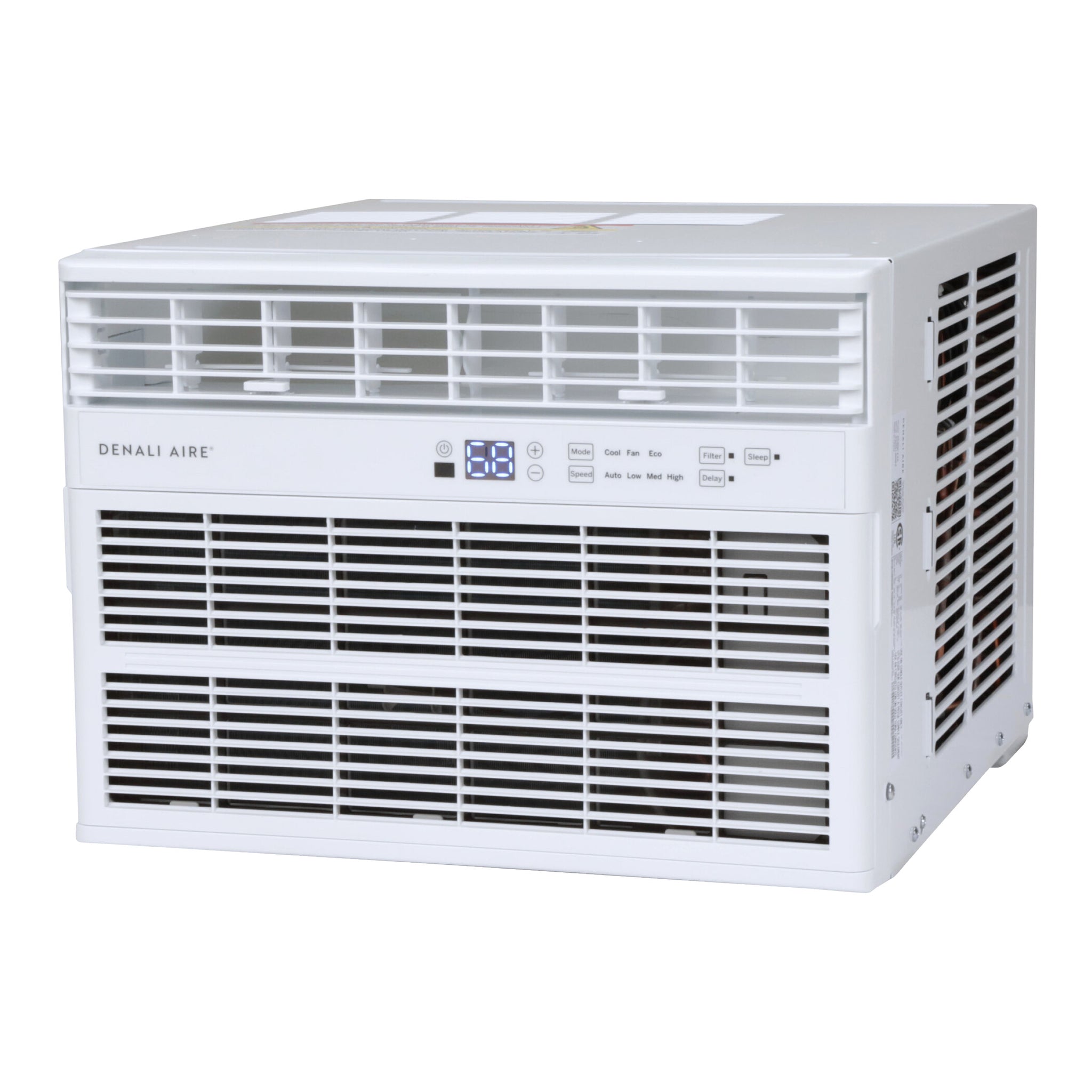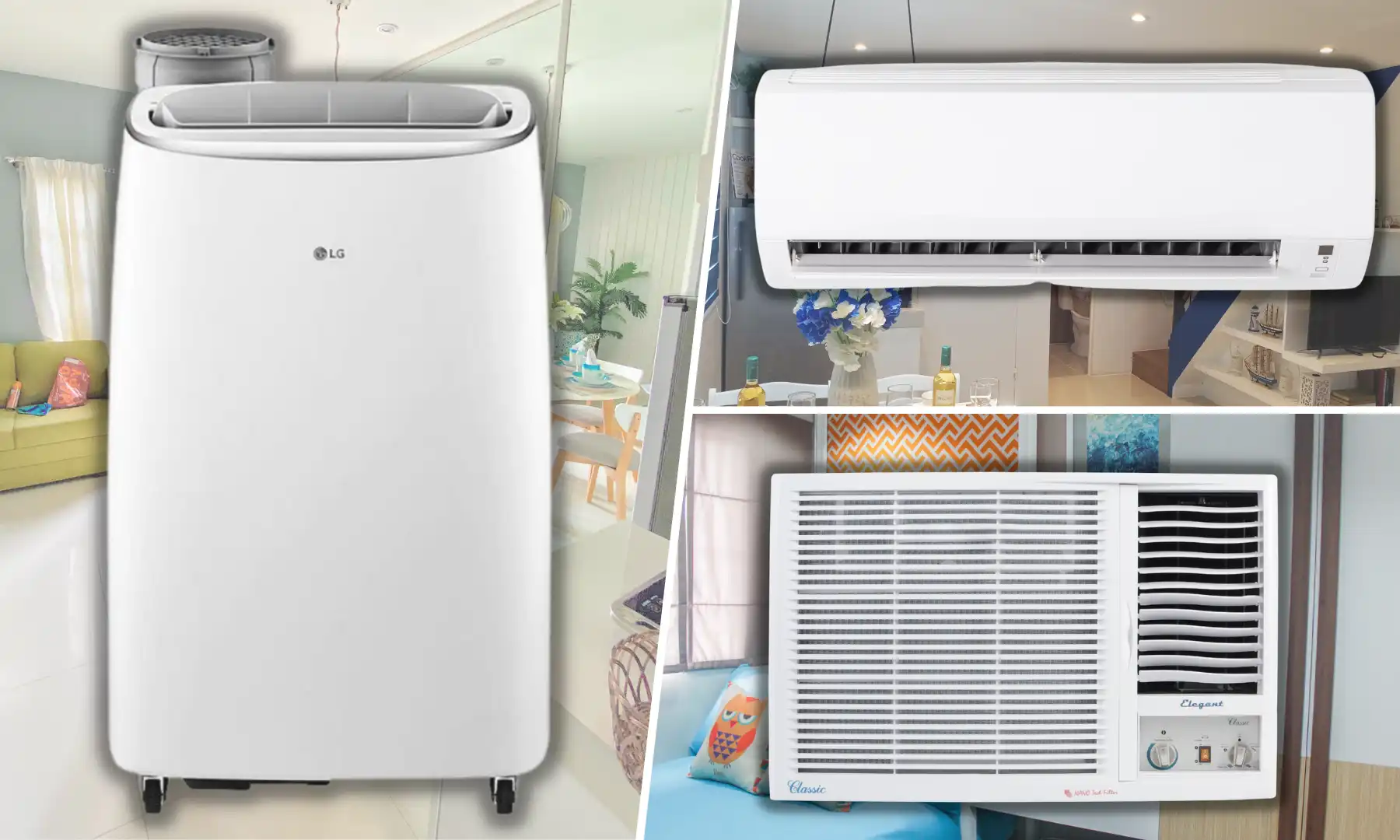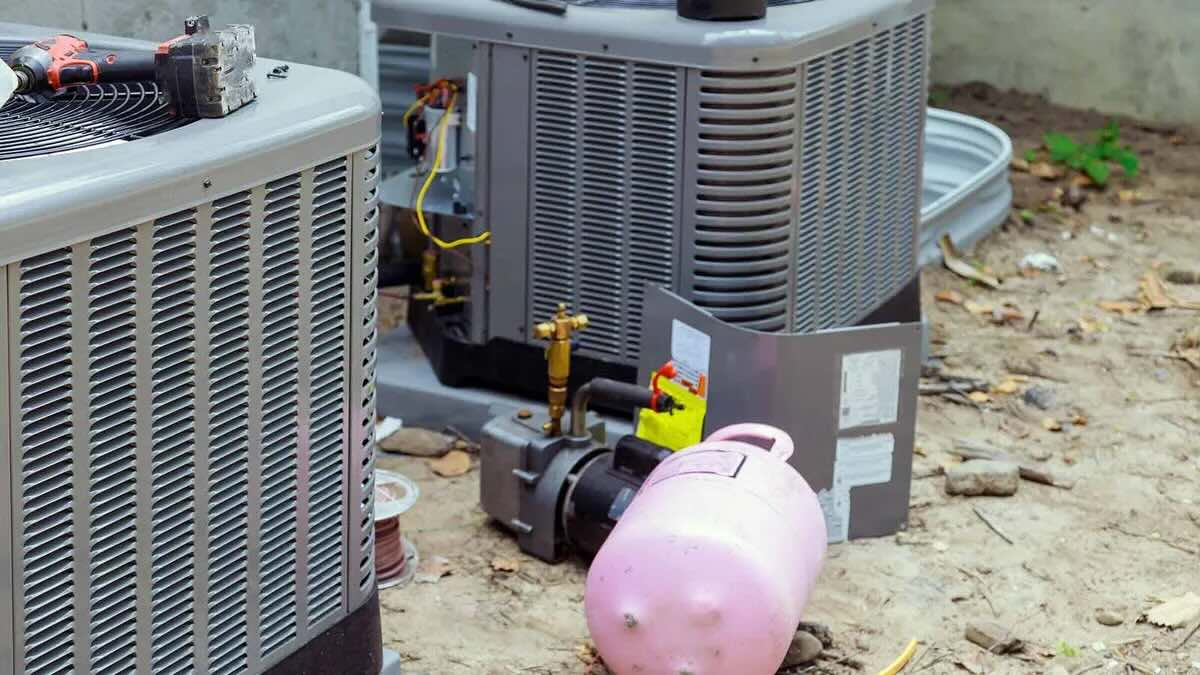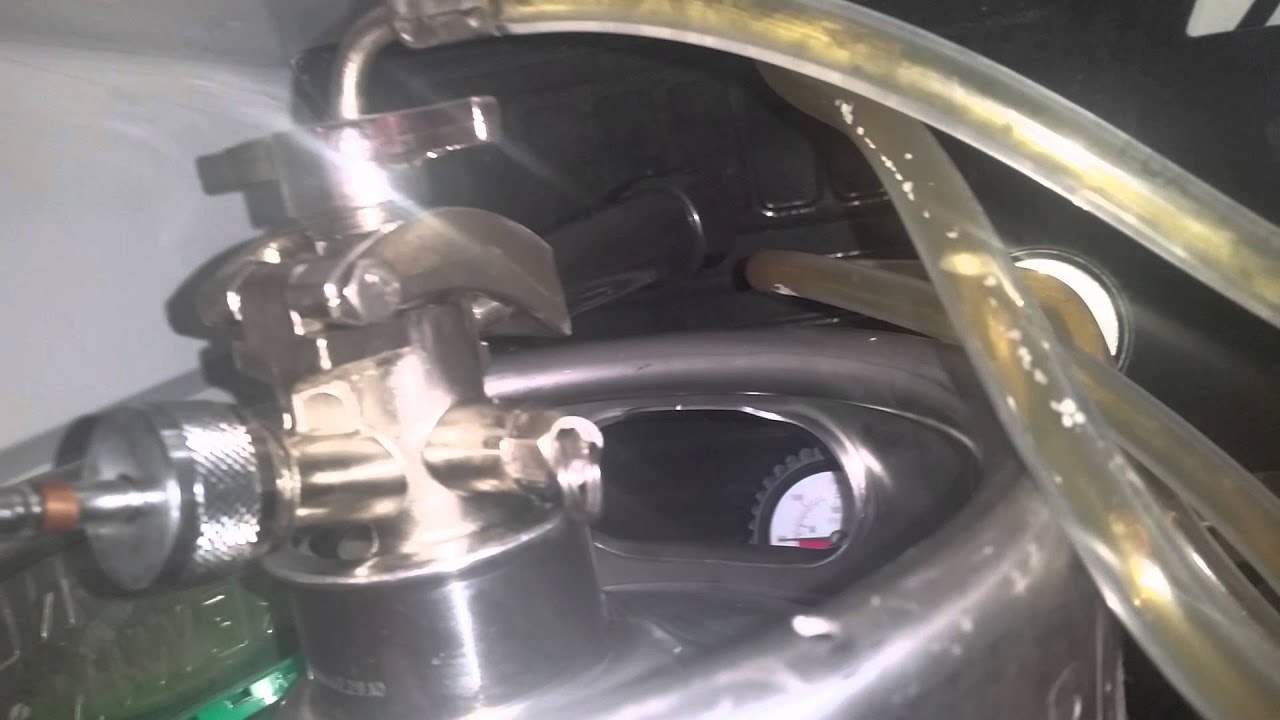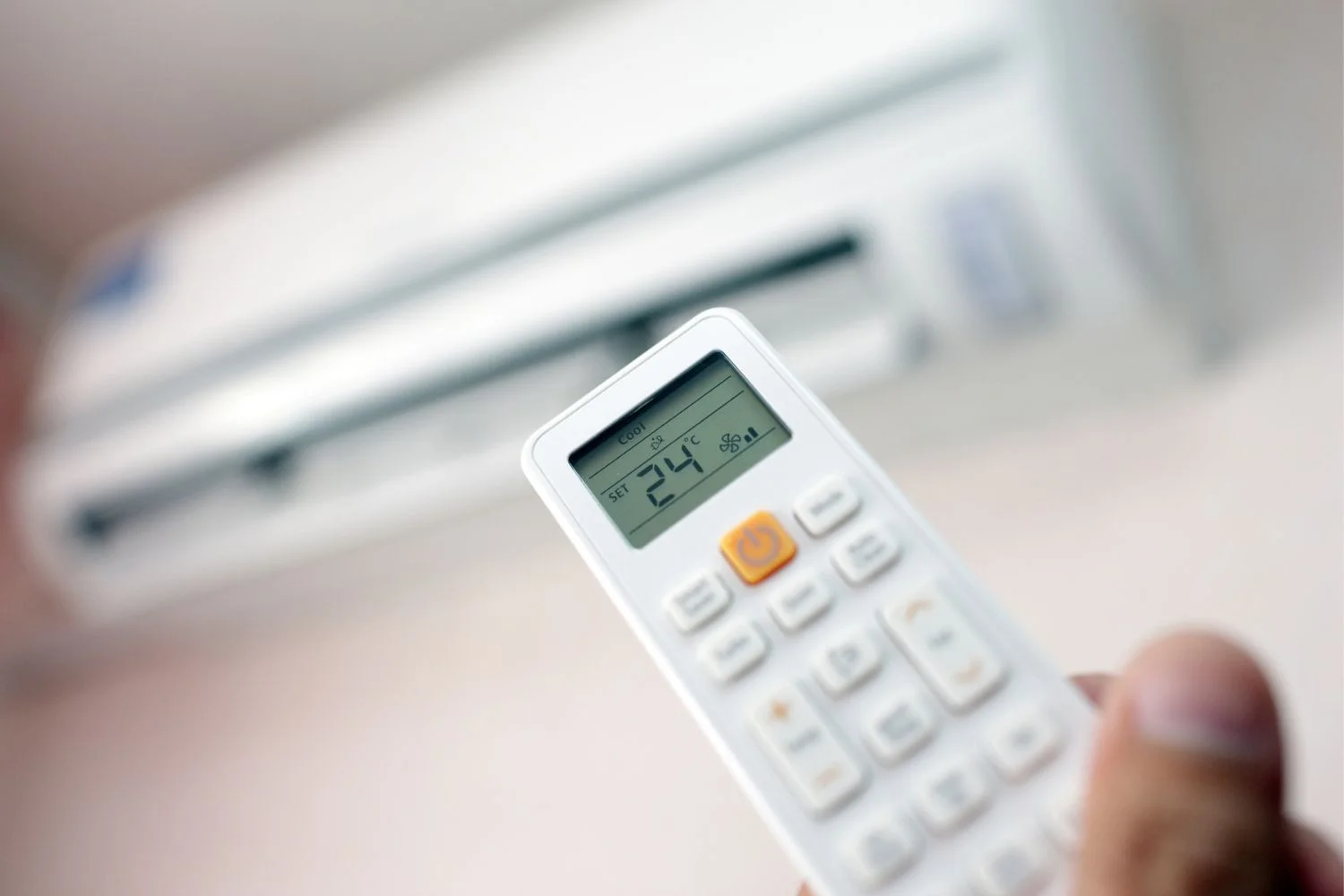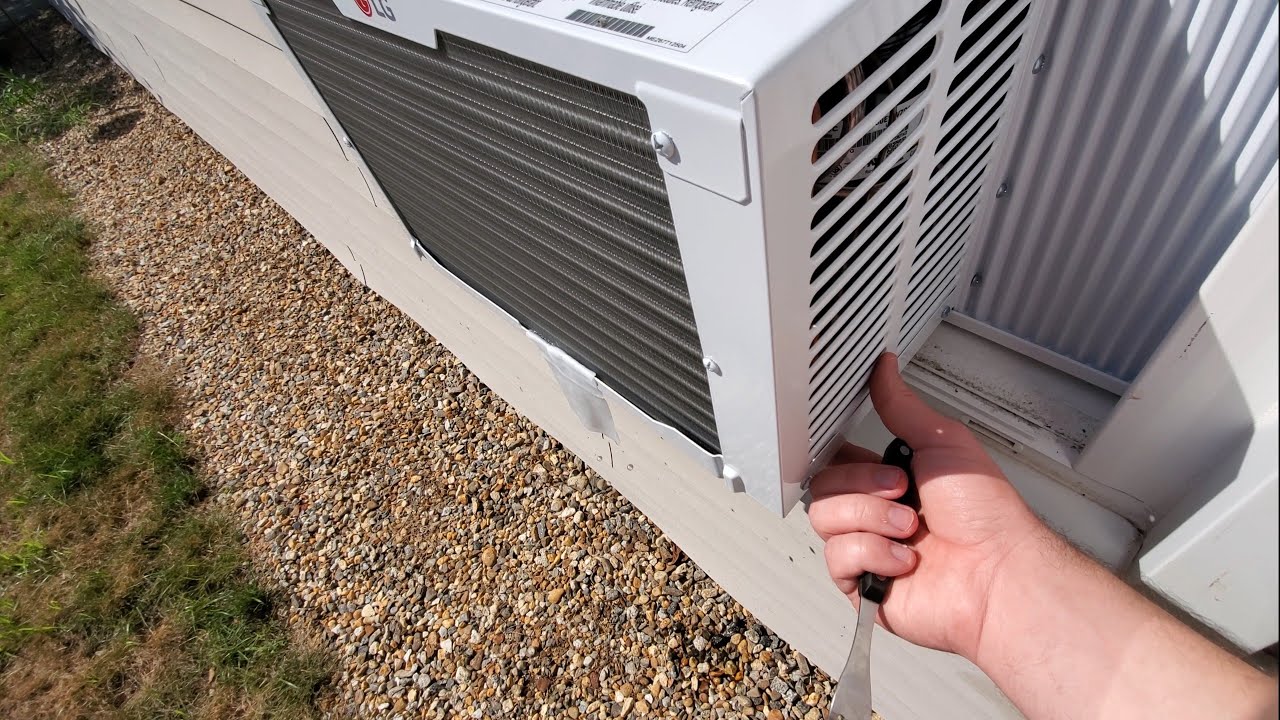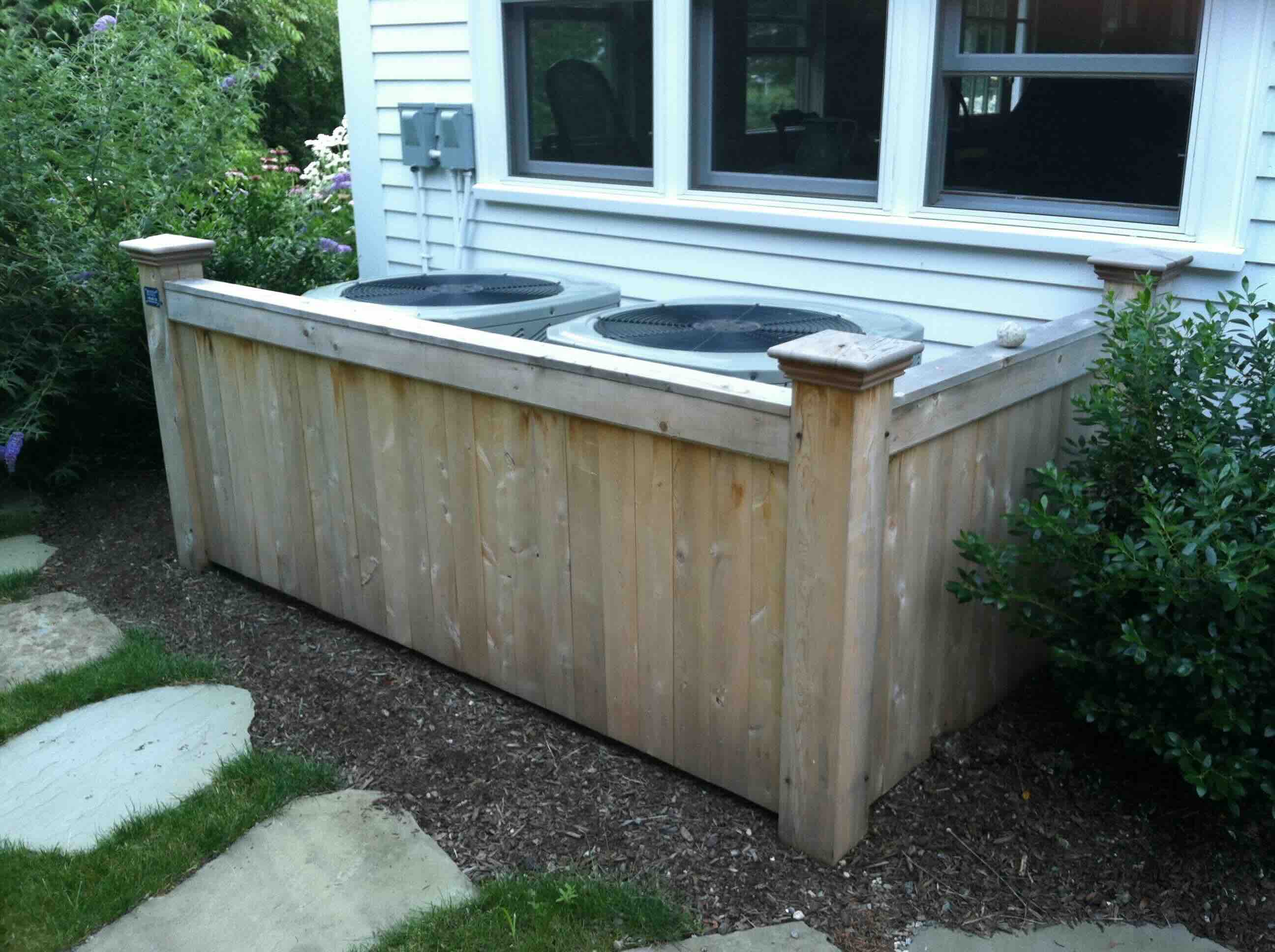Home>Home Maintenance>What Is The Small Copper Line From An Air Conditioner


Home Maintenance
What Is The Small Copper Line From An Air Conditioner
Modified: August 26, 2024
Discover what the small copper line from an air conditioner is and how it contributes to home maintenance. Learn more about this essential component today!
(Many of the links in this article redirect to a specific reviewed product. Your purchase of these products through affiliate links helps to generate commission for Storables.com, at no extra cost. Learn more)
Introduction
Welcome to our comprehensive guide on the small copper line from an air conditioner. If you’ve ever wondered about the purpose and function of this important component, you’ve come to the right place. In this article, we will explore the various aspects of the small copper line, its role in an air conditioner system, and the significance of proper maintenance to ensure optimal performance.
When it comes to home maintenance, understanding the inner workings of your appliances is key. The small copper line, also known as the refrigerant line or refrigerant tubing, is a vital part of your air conditioning unit. It plays a crucial role in the cooling process by circulating the refrigerant between the indoor and outdoor units.
To truly grasp the significance of the small copper line, it is essential to have a basic understanding of the different components that make up an air conditioner system. Let’s delve into the key elements of an air conditioner to provide a comprehensive foundation for our exploration of the small copper line.
Key Takeaways:
- The small copper line in your air conditioner is crucial for cooling your home effectively. Regular maintenance, such as cleaning and inspections, can help prevent issues like reduced cooling performance and increased energy bills.
- If you notice signs of problems with the small copper line, such as frost buildup or strange noises, it’s best to seek professional help. HVAC technicians can diagnose and repair issues to ensure your air conditioner runs smoothly.
Read more: What To Line Air Fryer With
Purpose of the Small Copper Line
The small copper line in an air conditioner serves two primary purposes: transporting the refrigerant and facilitating heat exchange. The refrigerant, a chemical compound responsible for absorbing and releasing heat, flows through this line to maintain the desired temperature indoors.
Firstly, the small copper line carries the refrigerant between the outdoor condenser unit and the indoor evaporator coil. This line ensures a continuous flow of refrigerant, allowing for efficient heat transfer between the two units. Without the small copper line, the refrigerant would not be able to reach the evaporator coil, resulting in the air conditioner’s inability to cool the air.
Secondly, the small copper line enables heat exchange to occur. When warm air from within your home passes over the evaporator coil, the refrigerant inside the coil absorbs heat from the air. This process cools the air before it is circulated back into your living space. The small copper line then carries the heated refrigerant to the outdoor condenser unit. Here, the heat energy is released into the atmosphere through the condenser coil, allowing the refrigerant to cool down and repeat the cycle.
Overall, the purpose of the small copper line is crucial in ensuring that the refrigerant flows smoothly between the indoor and outdoor units. By facilitating heat exchange, it enables the air conditioner to effectively cool the air in your home, providing you with a comfortable living environment during those hot summer months.
Now that we understand the purpose of the small copper line, let’s explore the different components that make up an air conditioner system in order to appreciate how this line fits into the larger picture.
Components of an Air Conditioner
An air conditioner is a complex system composed of several key components that work together to provide cool air and maintain a comfortable indoor environment. Understanding these components will help you grasp the role of the small copper line and how it interacts with the other parts of the system.
1. Compressor: The compressor is the heart of an air conditioner. It pressurizes and circulates the refrigerant, enabling the heat transfer process. The compressor is typically located in the outdoor unit.
2. Condenser Coil: The condenser coil is responsible for releasing the heat absorbed from the indoor air. It is located in the outdoor unit and works in conjunction with the compressor to dissipate heat into the surrounding environment.
3. Evaporator Coil: The evaporator coil is situated in the indoor unit and is responsible for cooling the air. As the refrigerant absorbs heat from the indoor air, the evaporator coil helps cool and dehumidify the air before it is circulated back into your living space.
4. Air Handler: The air handler, also known as the blower or fan, circulates the conditioned air throughout your home. It is located in the indoor unit and works in tandem with the evaporator coil to distribute cool air through the air ducts.
5. Air Ducts: The air ducts are responsible for delivering the conditioned air from the air handler to various rooms in your home. These ducts should be properly insulated to minimize energy loss and ensure efficient cooling.
6. Thermostat: The thermostat serves as the control center for your air conditioner. It allows you to set and maintain the desired temperature in your home. The thermostat communicates with the air conditioner to activate or deactivate the cooling process.
7. Small Copper Line: Finally, we come to the small copper line. As mentioned earlier, this line connects the indoor and outdoor units, allowing for the circulation of refrigerant and the transfer of heat. It plays a vital role in the overall cooling process of the air conditioner system.
Now that we have a clear understanding of the various components of an air conditioner, let’s delve deeper into the function of the small copper line and its importance in maintaining an efficient and effective cooling system.
Function of the Small Copper Line
The small copper line in an air conditioner has a critical function in the cooling process by facilitating the circulation of refrigerant and enabling heat transfer between the indoor and outdoor units. Let’s dive into the specifics of how the small copper line performs its essential function.
1. Refrigerant Circulation: The small copper line serves as a conduit for the refrigerant, allowing it to flow between the evaporator coil and the condenser coil. Once the refrigerant absorbs heat from the indoor air at the evaporator coil, it travels through the small copper line to reach the outdoor condenser unit. This continuous circulation ensures that the refrigerant can carry out its cooling properties effectively.
2. Heat Transfer: The small copper line plays a crucial role in the heat transfer process. At the evaporator coil, the refrigerant absorbs heat from the warm indoor air, causing the air to cool down. The refrigerant then carries the heat energy through the small copper line to the condenser coil located in the outdoor unit. Here, the heat is released into the atmosphere, allowing the refrigerant to cool down and prepare for another cycle of cooling. The small copper line is essential in transporting the heated refrigerant to the condenser coil for the dissipation of heat.
3. Pressure Regulation: The small copper line assists in regulating the pressure of the refrigerant throughout the cooling process. As it transports the refrigerant, the small copper line helps maintain the appropriate pressure levels needed for efficient heat exchange. The proper pressure ensures that the refrigerant can effectively absorb and release heat, contributing to the overall cooling performance of the air conditioner system.
4. Connection and Integration: In addition to its primary functions, the small copper line serves as a connection point between the indoor and outdoor units. It allows for the integration and synchronization of the various components of the air conditioner system. Without the small copper line, the refrigerant would be unable to reach the condenser coil for heat dissipation, resulting in a breakdown of the cooling process.
So, the small copper line contributes significantly to the functionality of the air conditioner system by facilitating refrigerant circulation, enabling heat transfer, regulating pressure, and ensuring seamless integration.
Now that we understand the function of the small copper line, it is crucial to recognize the importance of proper maintenance to ensure its continued effectiveness and prevent any issues that may arise. Let’s explore the significance of maintaining the small copper line as part of your overall air conditioner upkeep.
Importance of Proper Maintenance
Proper maintenance of the small copper line and your air conditioner system as a whole is essential to keep it running smoothly and efficiently. Neglecting maintenance can lead to various problems and compromises the overall performance and lifespan of your unit. Let’s dive into the reasons why proper maintenance is so important.
1. Energy Efficiency: Regular maintenance, including cleaning and inspecting the small copper line, helps ensure optimal energy efficiency. When the small copper line becomes dirty or clogged, it can restrict the flow of refrigerant and hinder heat transfer. This puts additional strain on the system, causing it to work harder and consume more energy to achieve the desired cooling effect. By keeping the small copper line clean and well-maintained, you can maximize energy efficiency and potentially reduce your energy bills.
2. Extended Lifespan: A well-maintained air conditioner system, including the small copper line, can have a longer lifespan. Regular maintenance helps identify and resolve any issues or potential damage before they escalate. By taking care of your air conditioner and addressing small problems promptly, you can avoid costly repairs or even premature system failure.
3. Improved Air Quality: The small copper line and the entire air conditioner system contribute to the quality of the air you breathe indoors. Dust, debris, and mold can accumulate in the small copper line over time, leading to poor air quality. Regular maintenance, including cleaning or replacing the filters and inspecting the small copper line, ensures that the air conditioner is working effectively and circulating clean and fresh air.
4. Prevention of Breakdowns: Regular maintenance allows for the early detection and prevention of potential issues with the small copper line and the air conditioner system. By identifying and addressing problems in their early stages, you can prevent major breakdowns and costly repairs. This proactive approach to maintenance can also help you avoid uncomfortable situations when your air conditioner stops working during the peak of summer.
5. Warranty Compliance: Many air conditioner manufacturers require regular maintenance as a condition for warranty coverage. By staying on top of maintenance tasks, such as inspecting and cleaning the small copper line, you can ensure that you comply with the warranty requirements. This way, if any major issues arise, you can have the peace of mind that your warranty will cover the necessary repairs.
By prioritizing proper maintenance for your air conditioner system, including the small copper line, you can enjoy improved energy efficiency, extended lifespan, better air quality, prevention of breakdowns, and compliance with warranty requirements. Now that we understand the importance of maintenance, let’s explore some of the signs that may indicate issues with the small copper line.
The small copper line from an air conditioner is called the refrigerant line. It carries the refrigerant, which absorbs heat from inside and releases it outside, helping to cool the air. Keep the line clean and insulated for efficient cooling.
Signs of Issues with the Small Copper Line
Being aware of the signs that may indicate problems with the small copper line can help you address issues promptly and prevent further damage to your air conditioner system. Here are a few common signs to watch out for:
1. Reduced Cooling Performance: If you notice that your air conditioner is not cooling your home as effectively as it used to, it could be a sign of a problem with the small copper line. Issues such as refrigerant leaks or blockages in the line can hinder the flow of refrigerant and impact the system’s cooling capabilities.
2. Frost or Ice Buildup: Another sign of a potential problem with the small copper line is the presence of frost or ice buildup on the evaporator coil or refrigerant lines. This can indicate issues with refrigerant levels or airflow, both of which can be linked to a malfunctioning small copper line.
3. Strange Noises: Unusual noises coming from your air conditioner system, such as hissing, gurgling, or bubbling sounds, can be indicative of problems with the small copper line. These noises may be caused by refrigerant leaks or obstructions in the line.
4. Water Leakage: Excessive condensation or water leakage around the indoor unit can be a sign of a problem with the small copper line. When the line is compromised, it can lead to improper drainage of condensate and result in water buildup.
5. Increased Energy Bills: A sudden increase in your energy bills without a corresponding change in usage patterns can be a red flag for a problem with your air conditioner, including the small copper line. If the refrigerant is not circulating properly, your system will have to work harder to achieve the desired cooling, leading to higher energy consumption.
6. Frequent Cycling: If your air conditioner cycles on and off more frequently than usual, it may indicate an issue with the small copper line. This could be a result of inadequate refrigerant levels or a blocked line, disrupting the system’s operation.
If you notice any of these signs, it is crucial to address the issue promptly. Ignoring problems with the small copper line can lead to further damage to your air conditioner system and potentially costlier repairs. Let’s explore some common issues that can affect the small copper line.
Common Problems Affecting the Small Copper Line
The small copper line in an air conditioner can experience various issues that can impact the system’s performance. Identifying and addressing these problems in a timely manner is crucial to ensure the proper functioning of your air conditioner. Let’s explore some common problems that can affect the small copper line:
1. Refrigerant Leaks: One of the most common issues with the small copper line is refrigerant leaks. Over time, the copper line can develop small cracks or holes, causing refrigerant to escape. This not only reduces the effectiveness of your air conditioner but can also lead to potential health hazards and environmental damage. If you notice a decline in cooling performance or hissing sounds near the copper line, it may indicate a refrigerant leak.
2. Blockages or Obstructions: The small copper line can also become blocked or obstructed, hindering the flow of refrigerant. Common culprits of blockages include debris, dirt, or even mold growth inside the line. A blocked copper line can result in reduced cooling capacity, increased energy consumption, and potential damage to the compressor. Regular cleaning and maintenance can help prevent blockages and ensure smooth refrigerant flow.
3. Copper Line Damage: The small copper line is prone to physical damage due to various reasons, such as accidental impacts, extreme weather conditions, or improper handling during installation or repairs. Damaged sections of the copper line can contribute to refrigerant leaks or ruptures, leading to a loss of cooling capacity. Inspecting the copper line regularly and repairing any visible damage is essential to maintain its integrity.
4. Improper Sizing or Installation: A poorly sized or improperly installed small copper line can negatively impact the performance of the air conditioner. If the copper line diameter is not appropriate for the system’s capacity, it can result in inefficient cooling and excessive strain on the compressor. Moreover, incorrect installation, such as improper bending or kinking of the line, can restrict the flow of refrigerant. It is crucial to ensure that the small copper line is correctly sized and installed by a professional HVAC technician.
5. Insufficient Refrigerant Levels: Insufficient refrigerant levels in the system, often caused by leaks in the small copper line, can lead to poor cooling performance and potential damage to the compressor. If you notice your air conditioner is struggling to cool your home or experiencing longer cooling cycles, it may be an indication of low refrigerant levels in the system. A professional technician can diagnose the issue and perform the necessary repairs.
Addressing these common problems promptly and seeking professional help when needed is key to maintaining the efficiency and longevity of your air conditioner system. Regular maintenance and inspections can help identify and prevent these issues before they escalate.
Now that we’ve discussed common problems affecting the small copper line, let’s explore troubleshooting steps you can take if you encounter any issues.
Troubleshooting Steps for Small Copper Line Problems
If you are experiencing issues with the small copper line in your air conditioner, there are some troubleshooting steps you can take to identify and potentially resolve the problems. However, it is important to note that working with HVAC systems can be complex and potentially dangerous. If you are not comfortable or experienced with this type of work, it is always best to seek assistance from a professional technician. Here are some general troubleshooting steps you can consider:
1. Check for Refrigerant Leaks: If you suspect a refrigerant leak in the small copper line, you can perform a visual inspection. Look for any signs of oil stains, wet spots, or frost accumulation along the copper line. These can indicate a leak. However, it is crucial to remember that refrigerant is a hazardous substance, and handling it requires proper training and equipment. If you believe there is a leak, it is best to contact a professional HVAC technician for proper detection and repair.
2. Inspect for Blockages: If you suspect a blockage in the small copper line, visually inspect the line for any debris or obstructions. You can carefully remove any visible debris or clean the line with a soft brush. However, be cautious not to damage the line while doing so. It is also recommended to clean or replace the air filters, as dirty filters can contribute to blockages in the system. If the blockage persists or seems severe, it is advisable to contact a professional for further assistance.
3. Check for Physical Damage: Inspect the small copper line for any visible physical damage, such as cracks, dents, or leaks. If you observe any damage to the line, it is crucial to have it repaired by a certified technician. Attempting to fix a damaged copper line yourself can be risky and may lead to further issues or refrigerant leaks.
4. Verify Proper Insulation: Ensure that the small copper line is properly insulated. The insulation helps prevent condensation and maintains the efficiency of the refrigerant. If you notice any damaged or missing insulation, it is recommended to have it repaired or replaced by a professional technician.
5. Check Refrigerant Levels: If you suspect low refrigerant levels, it is best to have a professional technician perform a refrigerant recharge. Adding refrigerant to the system requires expertise and knowledge of the specific air conditioner model and refrigerant type. A professional can accurately assess the levels and ensure the proper amount is added to the system.
Remember, these troubleshooting steps are general guidelines. Each air conditioner system is unique, and specific troubleshooting may vary. It is always recommended to consult with a trained professional for a comprehensive assessment and resolution of any issues with the small copper line or your air conditioner system.
Now that we have covered some troubleshooting steps, let’s discuss the importance of seeking professional assistance and available repair options.
Professional Assistance and Repair Options
When it comes to addressing issues with the small copper line in your air conditioner, it is often best to seek professional assistance. HVAC technicians have the knowledge, experience, and specialized tools required to diagnose and repair problems effectively. Here are some professional assistance and repair options to consider:
1. HVAC Service Provider: Contacting a reputable HVAC service provider is often the best course of action when dealing with issues related to the small copper line. These professionals are trained in air conditioner repair and maintenance and can accurately diagnose the problem. They have access to the necessary tools and equipment to repair or replace the small copper line if needed.
2. Warranty Service: If your air conditioner is still under warranty, it’s important to review the terms and conditions of the warranty. Many manufacturers provide coverage for specific parts or labor, including the small copper line. In such cases, you may be eligible for free or discounted repair services from authorized technicians. Ensure that you comply with the warranty requirements, such as regular maintenance, to take advantage of the benefits.
3. Repair vs. Replacement: In some cases, the small copper line may need to be repaired or replaced. The appropriate course of action depends on the severity of the issue and the age of the air conditioner. A skilled technician can assess the condition of the line and provide guidance on the most cost-effective solution. Sometimes, repairing the line is sufficient, while in other situations, it may be more practical to replace the line altogether.
4. Preventative Maintenance Plans: Once the small copper line has been repaired or replaced, consider signing up for a preventative maintenance plan with a trusted HVAC service provider. These plans typically include regular inspections, cleaning, and tune-ups of your air conditioner system, including the small copper line. By investing in preventative maintenance, you can increase the longevity of your system and minimize the risk of future issues.
5. DIY Considerations: While there are troubleshooting steps you can take, it is important to exercise caution when attempting to fix or diagnose complex issues with the small copper line. Making mistakes during DIY repairs can lead to further damage or safety hazards. It is generally best to leave more intricate repairs or tasks involving refrigerant handling to certified professionals.
It is worth noting that the availability and options for professional assistance and repair may vary depending on your location and the specific air conditioner model you have. It is always recommended to research and select reputable service providers with experience in handling air conditioner systems.
By seeking professional assistance and exploring the appropriate repair options, you can ensure that any issues with the small copper line in your air conditioner are addressed effectively and efficiently.
Now let’s wrap up our discussion.
Read more: How To Run Copper Supply Lines
Conclusion
The small copper line plays a vital role in the functioning of your air conditioner system. It is responsible for transporting the refrigerant and facilitating heat exchange, allowing your air conditioner to cool your home effectively. Proper maintenance of the small copper line and the entire air conditioner system is crucial for optimal performance and longevity.
Regular maintenance helps ensure energy efficiency, extends the lifespan of your air conditioner, improves air quality, prevents breakdowns, and keeps you compliant with warranty requirements. It is important to stay vigilant and be aware of the signs of issues with the small copper line, such as reduced cooling performance, frost or ice buildup, strange noises, water leakage, increased energy bills, or frequent cycling.
If you encounter problems, it is recommended to troubleshoot cautiously, checking for refrigerant leaks, blockages, physical damage, proper insulation, and refrigerant levels. However, it is important to remember that HVAC systems are complex, and it is best to seek professional assistance from reputable HVAC service providers. They have the expertise, tools, and knowledge required to diagnose and repair issues related to the small copper line effectively.
Professional assistance and repair options include contacting HVAC service providers, utilizing warranty coverage, deciding between repair and replacement, considering preventative maintenance plans, and being cautious with DIY repairs. It is essential to choose certified professionals who can accurately assess and repair the small copper line, ensuring the optimal functioning of your air conditioner system.
In conclusion, understanding the purpose, function, and maintenance of the small copper line is essential for every homeowner. By prioritizing regular maintenance, promptly addressing issues, and seeking professional assistance when needed, you can enjoy cool and comfortable indoor temperatures while maximizing the efficiency and lifespan of your air conditioner system.
Remember, a well-maintained small copper line leads to a well-functioning air conditioner, ensuring your comfort throughout the year.
Frequently Asked Questions about What Is The Small Copper Line From An Air Conditioner
Was this page helpful?
At Storables.com, we guarantee accurate and reliable information. Our content, validated by Expert Board Contributors, is crafted following stringent Editorial Policies. We're committed to providing you with well-researched, expert-backed insights for all your informational needs.
